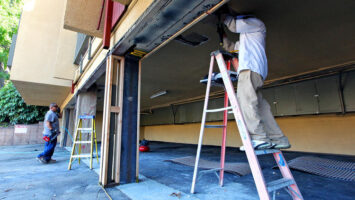SEISMIC RETROFITTING: UPGRADING OLDER BUILDINGS FOR EARTHQUAKE RESISTANCE
Seismic Retrofitting: Upgrading Older Buildings for Earthquake Resistance
Introduction
Seismic retrofitting is a critical process that involves making structural improvements to older buildings to enhance their ability to withstand earthquake forces. As seismic activity is a real and ongoing threat in many parts of the world, it’s essential to ensure the safety and resilience of older structures that were not originally designed to withstand the dynamic forces of an earthquake. This article explores the key points of seismic retrofitting, highlighting the importance and methods used in upgrading older buildings for earthquake resistance.
Understanding the Need for Seismic Retrofitting
- Vulnerability of Older Buildings: Older buildings, particularly those constructed before modern seismic building codes, are at a higher risk of sustaining significant damage during an earthquake. Many of these structures lack the structural integrity to withstand the lateral forces generated by seismic activity.
- Protecting Lives and Property: Seismic retrofitting is essential for public safety. Ensuring that older buildings can withstand earthquakes can save lives and prevent costly property damage.

Methods of Seismic Retrofitting
- Foundation Strengthening: One of the primary methods is reinforcing the building’s foundation. This involves improving the connection between the building and the ground to minimize settlement and lateral movement.
- Bracing Systems: Installing bracing systems, such as shear walls and moment frames, can enhance a building’s lateral load resistance. These systems help distribute seismic forces more effectively.
- Damping Systems: Using damping systems, such as tuned mass dampers or base isolators, can reduce a building’s oscillations during an earthquake, thus minimizing damage.
Assessment and Analysis
- Seismic Evaluation: Before retrofitting, a comprehensive seismic evaluation of the building is conducted. This assessment helps engineers determine the building’s existing vulnerabilities and the level of retrofitting needed.
- Cost-Benefit Analysis: It’s essential to consider the cost of seismic retrofitting against the potential earthquake damage. A cost-benefit analysis helps property owners make informed decisions regarding the retrofitting process.

Challenges in Seismic Retrofitting
- Cost and Financing: Seismic retrofitting can be expensive, and securing financing for these projects can be a challenge for property owners, especially in cases of historical or culturally significant buildings.
- Disruption: Retrofitting work can disrupt building occupants and neighboring properties. Careful planning is required to minimize inconvenience during the process.
Legislation and Building Codes
- Mandatory Retrofitting: In regions prone to earthquakes, there are often legal requirements for retrofitting older buildings to meet current seismic codes. Non-compliance can result in fines or even the closure of the building.
Benefits of Seismic Retrofitting
- Enhanced Safety: Retrofitting significantly improves the safety of occupants during an earthquake, reducing the risk of injuries or fatalities.
- Preservation of Historical Buildings: For older or historically significant structures, seismic retrofitting allows them to remain standing and functional while preserving their cultural heritage.
- Property Value: Retrofitting can increase property value, making it an attractive option for property owners.
Conclusion
Seismic retrofitting is an essential step towards ensuring the safety and longevity of older buildings in earthquake-prone regions. The process not only saves lives but also safeguards property investments. It is imperative that building owners, engineers, and local authorities work together to address the seismic vulnerability of older structures, mitigating the potential devastation that could result from a major earthquake. By doing so, communities can reduce risks, protect historical treasures, and promote resilience in the face of seismic challenges.


